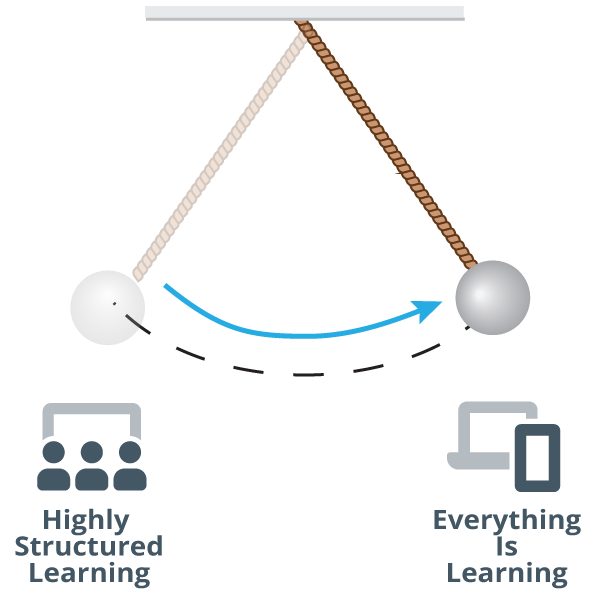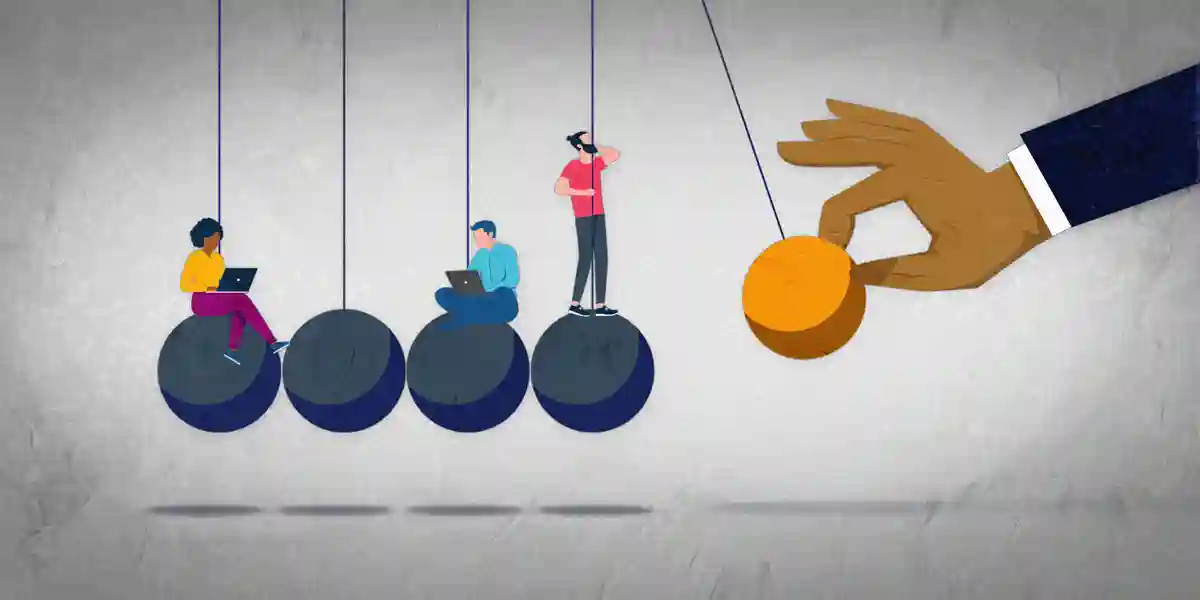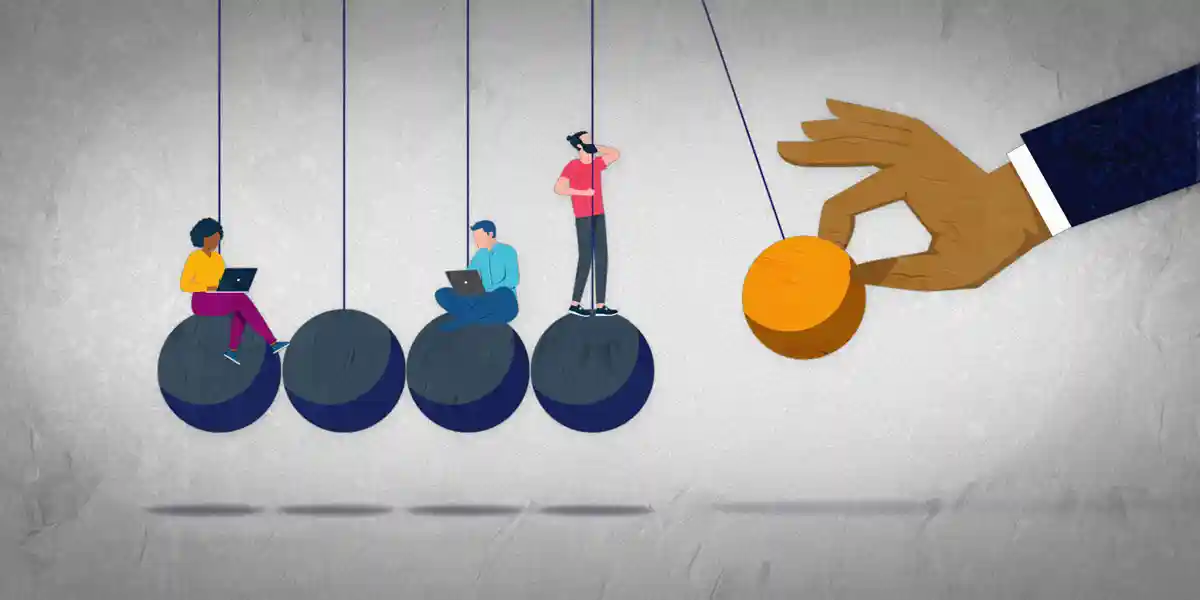Leaders are key to every organization’s success. They drive business results, shape culture, and support their teams through constant change. But as expectations rise and business challenges grow more complex, leadership roles get harder each day—and harder to retain. Many organizations struggle to keep leaders, putting their teams and business at risk. These growing challenges are driving organizations to rethink leadership development to meet today’s needs. But it’s not easy.
DDI’s Global Leadership Forecast, which has tracked leadership trends and challenges for more than 20 years, shows a troubling gap. In the most recent forecast, only 26% of leaders rated their leadership development as high quality. This lack of confidence points to a deeper issue: many programs fail to give leaders the skills they need to succeed.
One of the biggest gaps is in future-focused skills. Despite growing business challenges, only 22% of HR organizations focus on key leadership skills like setting strategy and managing change. Without these vital skills, leaders struggle to drive innovation and prepare their organizations for the future.
This gap isn’t just an HR issue—it’s a direct threat to business success. Companies need skilled leaders to reach their goals, yet many aren’t prepared to deliver. And when leaders don’t feel supported, retention suffers. To build a strong pipeline and ensure long-term success, organizations must see leadership development as a strategic imperative.
Here’s what we know about the current state of leadership development:
Unprepared
Leaders feel unprepared for their roles’ challenges.
Stressed
Leaders at all levels feel stressed, burnt out, and ready to quit leadership altogether.
Lack of Time
Leaders lack time for growth, so each learning experience must be deeply personalized to their unique needs—giving relevant, future-focused insights that drive real growth.
Pipeline Challenges
Organizations struggle to spot high-potential talent and build a healthy pipeline of leaders.
Limited Resources
While HR wants to offer high-quality development programs, they face limited time and resources in their own teams and among leaders. They also struggle to measure ROI to prove that development is vital.
If you’re struggling with these issues at your organization, you’re in good company. When we talk with our clients about the current state of leadership development, they share the same set of common issues. Drawing from decades of work with leading industry professionals, we’ve created some foundational principles that can help you move toward overcoming these challenges.
The Pendulum of Leadership Development
Most HR and learning professionals know what’s wrong with leadership development programs. And most agree on what makes a program work well.
But while well-versed in theory, they often struggle to bring their vision to life. In fact, data from the Harvard Business Review shows that barely 10% of the $200 billion spent yearly on corporate training and development in the U.S. leads to concrete results.

You can picture these different ways to develop leaders spread across a spectrum, with a pendulum swinging between extremes on either side. On the left are traditional approaches—in-person, classroom-based, highly structured group learning. On the right are more free-flowing approaches—self-paced, self-driven, largely digital microlearning. And of course, several methods fall somewhere in between.
Working with limited resources, HR and L&D teams often feel they must pick one approach, forcing the pendulum to either of the extremes.
For example, traditional, in-person classroom learning was once the norm, but circumstances forced organizations to adapt, quickly halting many in-person programs.
Some stopped development altogether, losing their program’s momentum. Others swung to the other side of the pendulum, dropping structured learning in favor of giving leaders access to online learning libraries to use on their own.
Of course, neither approach worked for everyone.
Successful organizations take a more balanced approach, mixing their development efforts based on both company and individual learner needs. They might create custom virtual classroom sessions for key leadership groups, while also offering online courses that give learners instant access to helpful content when facing specific challenges.
Finding the Center: A Consistent Leadership Language
As companies swing back and forth with the pendulum, they often struggle to source content that fits their different development needs. Often, they may need to mix materials created in-house with several vendors.
As a result, leaders may get mixed messages. Leadership development content from various sources will likely have different underlying leadership philosophies, approaches, and solutions. This could lead to a hodgepodge of leadership models—and taught behaviors.
As companies seek to offer a range of learning options, they need to keep a clear definition of their leadership language and culture. The key is to use a range of learning modalities and tools while linking them with a strong foundation that defines your leadership culture and meets your business goals.
Meeting Leaders in Motion
In a world of constant change, creating one leadership culture can feel like chasing a moving target. HR and L&D must stay adaptable, bringing that same flexibility to leadership development to keep up with shifting business needs.
This flexibility starts with strategy and personalization. To achieve tangible results, companies must treat leadership development as a core business strategy. When done well, it becomes a powerful tool for attracting and retaining top talent while connecting individual growth to company goals. Investing in leadership isn’t just about building skills—it’s about delivering the right insights, at the right time, to create lasting impact.
Leaders also need timely, relevant experiences that fit their individual roles, challenges, and potential. The most effective development doesn’t come from one approach—it’s about mixing learning opportunities from many sources to provide targeted, real-time insights that propel leaders forward.
At the heart of effective leadership development is a commitment to support leaders as they handle real challenges. Leadership development should never be “something else” your leaders have to do. It should be the key leaders seek to perform effectively and grow purposefully in their organization.
Make Development a Core Business Strategy
How can you start making development central to driving business results? Here are several principles that should guide your approach:
- Development must align with business strategy and goals. Its impact should be measurable through clear metrics and ROI to show how effective leaders address business challenges.
- Development needs to be a career-long endeavor of constant growth, not one-time events.
- Development must be personalized to leaders’ needs to make the best use of their time.
- Development must give leaders the skills they need today while also preparing them for future challenges.
- Development can’t be theory alone. Leaders need to practice skills in a low-stakes environment and then use them on the job in a way that others can see.
It may seem daunting. But leadership development is fundamental to the success of the entire organization. With a thoughtful approach, you can greatly improve leadership quality in your organization.
Leadership development isn’t just about building skills—it’s about delivering the right insights, at the right time, to create lasting impact.
Leadership Development for Long-Term Success
As you review your leadership development strategy, consider these key questions:
- Are you giving leaders the right skills at the right time? Are you helping them develop and practice essential leadership skills while providing on-demand support for current challenges?
- Is your approach consistent and aligned with your leadership culture? Do you create a consistent leadership language across leaders at all levels?
- Are you building a sustainable pipeline of future leaders? How are you preparing rising leaders with the skills and experiences they need to step into critical roles?
Have a Question?
FAQ
-
What is the current state of leadership development globally?
Based on DDI’s Global Leadership Forecast research, organizations worldwide face increasing leadership challenges, including difficulty building strong leadership pipelines, gaps in critical leadership skills, and the urgent need for more inclusive and adaptable leaders.
-
What are the biggest challenges in leadership development today?
DDI’s research shows that organizations struggle with a shortage of leadership-ready talent, low confidence in leadership pipelines, slow development of future skills like agility and inclusion, and difficulties measuring the business impact of leadership programs.
-
How is leadership development evolving to meet future needs?
Leadership development is shifting toward more personalized, virtual, and business-aligned experiences. At DDI, we help organizations adapt by building leadership development programs that prioritize agility, emotional intelligence, innovation, and strategic thinking.
-
How does DDI support organizations facing leadership development challenges?
DDI partners with organizations to create leadership development strategies aligned with business drivers, success profiles, and future skill needs. Our solutions focus on building stronger leadership pipelines, accelerating high-potential leaders, and driving measurable business impact.
Topics covered in this blog

